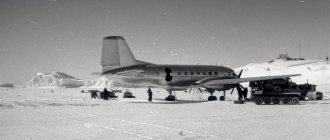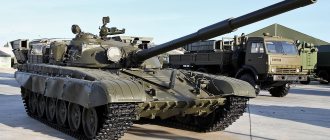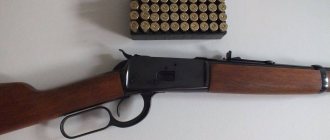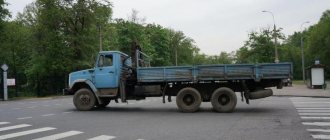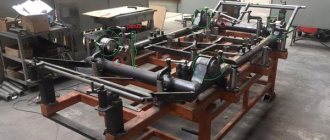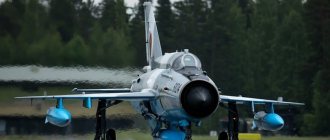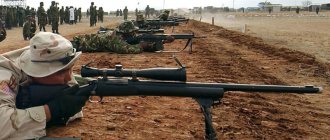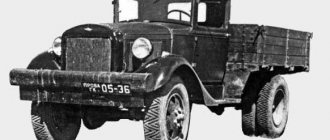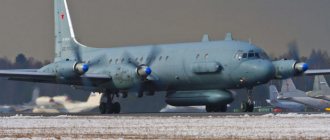What models were produced
The first copies of the powerful all-terrain vehicle appeared on the roads in 1961. The cabin was made with a removable fabric roof. They installed a flat windshield, which was raised when necessary. The model was produced for only three years. This version of the Ural 375 had not the worst characteristics, but not the best either.
Starting in 1964, a truck with the letter D was produced. It was equipped with a metal platform and a driver’s cab. For the convenience of passengers and loaders, a folding tailgate was installed. Benches and a driver signal button were placed in the back.
The first Ural 375 trucks had not very good fuel consumption characteristics. 70 liters of A-92 fuel were required for every 100 km. After modernization, consumption dropped to 50 liters per 100 km. On difficult terrain, in harsh winter engine operating conditions, gasoline consumption increased by another 20-30 liters.
Modification A was produced with longer spars. An army kung was installed on the model. The tank was moved down, the gas exhaust pipe system was installed in another place. A spare tire was hung on the rear overhang of the frame. The Ural-375T was created as a prototype for the next model with the letter N, and therefore was not mass-produced.
The model with the letter E was developed for the army; weapons and military equipment for various purposes were installed in the body. These were cars with:
- tank;
— generators;
- crane;
- rockets.
Radar stations were also installed in the body.
Many people know the military Ural-375SK1 and the civilian model SN. They were widely used throughout the country. In the army, the vehicle was also needed to transport missile systems. For operation in the coldest conditions, a model with the letter K was developed. It was equipped with low-temperature resistant rubber products, an additional radiator grille, and an insulated cabin.
The civilian model Ural-375N was also produced with a wooden platform, but with all folding sides. The truck did not have shielded electrical equipment or an air intake. The joints of the transmission elements were not sealed, and the tire pressure was not regulated.
Main modifications
Ural-375 chassis without platform
During the period of operation, the Ural-375 received several modifications:
- Ural-375D - produced since 1964, received an all-metal cabin, is considered the most successful modification of the main model;
- Ural-375A - the chassis had an extended frame for the K-375 van;
- Ural-375E - the chassis was also designed for the installation of additional equipment;
- Ural-375S - a truck tractor, had an increased size of the additional fuel tank taking into account loads on rough terrain;
- Ural-375K is a truck designed for use in the Far North;
- Ural-375T - a prototype for the next model Ural-375N, did not have mass production;
- Ural-375N is a national economic truck.
The last car had external differences from the base model. There was no air intake pipe; the platform was wooden with three opening sides. The wheels did not have centralized pressure control; the spare wheel was located under the platform, and not between it and the cabin.
Frame
The Ural-375 has a strong, high-quality riveted frame. It consisted of various stamped elements. Tow hooks were placed on the front side members.
| Ural-375, main characteristics | |
| Length | 7 360 mm |
| Width | 2,674 mm |
| Height | 2,980 mm |
| Load capacity | 5,000 kg |
| Maximum speed | 75 km/h |
| Curb weight | 8,300 kg |
| Full mass | 13,300 kg |
| Maximum towed trailer weight | 10,000 kg |
| Power unit | |
| Engine | ZIL-375 |
| Fuel consumption | 50 l, AI-92 |
| Power | 180 hp |
| Volume | 7 l |
| Platform | |
| Length | 3,900 mm |
| Width | 2 430 mm |
| Other characteristics | |
| Wheel formula | 6x6 |
| Transmission | YaMZ-24U, mechanical. |
| Fuel tank | 300+60 l |
| Tires | OI-25 |
Design and performance characteristics
Ural-375 with an open loading platform
The basis of the design of the Ural-375 is a chassis made on the basis of a stamped riveted frame. It housed a metal cabin and a platform for the cargo compartment, which was originally made of wood. There were two rigid hooks at the front as a towing device, and at the rear there was a double-sided towing device.
For this car, special wheels were used that had conical flanges, spacer rings and split rims. For the main version of the truck, OI-25 tires with variable pressure were provided. Pressure control was centralized, control was provided from the cabin. Air supply is internal.
Cabin and body
In the first Ural 375 trucks, the cabin was metal, with folding window frames and a soft top. Later it was replaced with an all-metal one with rotating windows, a blind wind window and sliding windows. The windshield was divided into sections, which provided additional rigidity.
The interior of the cabin was as simple as possible. Hard seats, a minimal set of control devices and sensors. Water heating from the cooling system also did not appear immediately.
The first platforms were wooden. Starting with sample 375D, they became metal, the rear side was hinged, the front and sides were lattice and add-on. For the transportation of goods and people there was a removable tarpaulin awning and folding benches.
Engine
Ural-375 with an awning for transporting people
The first truck models were equipped with a ZIL 375 engine. The power plant was four-stroke with eight cylinders and rotated one crankshaft. Good balancing allowed the engine to operate stably at high loads and low speeds.
The cylinder block was made of cast iron, the cylinder head was made of aluminum alloy. The working volume was 7 liters, the rated power was 180 liters. With. Recommended gasoline is A-92.
Later, KamAZ-740 eight-cylinder diesel engines began to be installed on Ural-375 trucks. The unit complied with the Euro-1 environmental standard and coped well with high loads. The working volume was 10.85 liters, the rated power was 210 liters. s., torque - 667 Nm.
Fuel system
The fuel system has a two-chamber carburetor. AI-92 gasoline was used for filling; AI-72 was allowed to be used as a temporary measure. There are two fuel tanks, a main one of 300 liters and an additional one of 60 liters.
Chassis and brakes
The front suspension of the Ural-375 truck consists of two semi-elliptical springs. Their front ends were attached to the frame with fingers and lugs, while the rear ends remained sliding. Double-acting hydraulic telescopic shock absorbers were also used.
The rear suspension was balanced, also based on two springs with sliding supports. The middle bridge had limit cables, shocks were transmitted by reaction rods. The front steering axle was driven, and angular velocity joints were provided for the axle shafts.
The brake system is foot type, pads are installed on all wheels. There was a joint pneumohydraulic drive for the front and middle axles. For the rear, a similar drive was separate. A drum-type hand brake with internal shoes was mounted on the output shaft of the additional box. At a speed of 40 km/h, the braking distance is 15 m.
Gearbox and transmission
The Ural-375 truck has a YaMZ-204U mechanical transmission, designed for five forward and one reverse gears. In the Ural 375 gearbox, the gear ratios were combined with synchronizers at 2, 3, 4, and 5 speeds. The clutch was double-disc dry and had peripheral springs. The cardan transmission is open, with four shafts.
Controls
Instrument panel Ural-375
The instrument panel Ural 375 is simple. All systems are represented by sensors and indicators that allow you to monitor the condition of the machine in any conditions. The steering mechanism is worm gear with a gear sector and hydraulic booster, the gearbox is mechanical.
Fuel consumption
For Ural 375 trucks, the fuel consumption of the first models was up to 70 liters per 100 km. Later, with the replacement of the engine and modernization of the fuel system, the figure was reduced to 50 liters.
Fuel consumption depended largely on the type of terrain. On highways at high speeds, consumption is minimal. On rough terrain, as well as in cold climates, fuel consumption increased by up to 50%. Taking this aspect into account, the power reserve is indicated in a mixed form and amounts to up to 750 km.
Maximum speed and load
The permissible speed of movement of the Ural-375 is 75 km/h. The engine power made it possible to overcome climbs of 40 degrees. The turn on the outer track had a radius of 10.5 meters.
The carrying capacity of the vehicle according to its basic characteristics was 5 tons. However, this figure largely depended on terrain conditions and road surfaces. The weight of the towed trailer was 10 tons.
Dimensions and weight
In terms of dimensions and weight, the Ural-375 trucks have the following technical characteristics:
- length - 7.35 m;
- width - 2.69 m;
- height - 2.68 m, along the awning - 2.98 m;
- ground clearance (clearance) - 0.4 m;
- track width - 2 m;
- own weight - 8.4 tons.
Depending on the modification and model, some parameters may differ. The wheel formula of the car remained unchanged - 6x6.
Tuning and modernization
Modernization of the Ural-375 continued throughout the active use of these trucks. Soon after release, the new cars received all-metal cabins, as well as metal platforms with folding tailgates.
Separate tuning was also done within the same line of cars. Some samples were equipped with special equipment, for example, a 65 m drum-type winch. Single-pass mechanical power take-offs for the gearbox and transfer mechanism were also installed. They provided drive for auxiliary devices and better control of the machine.
Conclusion
Production of models of the Ural 375 family was stopped in 1992. Today you can still buy a truck in good condition. Many military vehicles have been mothballed for a long time. The model has a long service life and good reliability. The wheel arrangement of the truck has always been 6x6, and remained so for any modification.
Advantages of the truck:
— excellent driving performance, power and high maneuverability;
— unpretentiousness and reliability;
— ease of repair, interchangeability of spare parts with other modifications.
The only disadvantage of the Ural-375 is its high gasoline consumption. In the latest models, designers have managed to reduce operating costs. The cost of an all-terrain vehicle depends on its condition, year of manufacture, and ranges from 300-800 thousand rubles.
Fuel consumption
According to information from the operating instructions, the Ural-375 truck, regardless of configuration, will consume 48 liters of fuel when operating in mixed mode.
Ural-375 - rear view
But in practice, it turned out that actual fuel consumption depends on many factors: terrain, quality of the road surface (for off-road driving you need 50% more fuel), temperature (driving in hot weather requires more gasoline than in cold weather), wear level car and its parts.
In addition to the above factors, the model of the truck also affects the range. So, according to the instructions, the 375C truck has a power reserve of 650 km, and the 375D – 750 km.
Such high gasoline consumption is the only significant drawback of the Ural-375. In an effort to solve it, specialists at the Ural plant began producing new cars that ran on diesel and required less fuel. They became increasingly popular, and by 1992 they had displaced gasoline-powered trucks from production.
Related video: Ural-375
Publications on the topic
The principle of operation of the brake system of the Urals 5557, 4320
General description and technical characteristics of the Ural-6464 truck tractor
Reliable truck Ural 4320
Difficulties in setting up production
Naturally, a large team of plant specialists took part in creating a new car and putting it into production. A.I. Titkov in his memoirs especially notes the contribution of V.A. Gurushkina, who came to Miass to the automobile plant in September 1947 as a young specialist, was the chief engineer of the automobile plant during the development of the Ural-375; in 1960–1970 - Director of UralAZ.
Anatoly Titkov: “Naturally, Viktor Alekseevich Gurushkin, as the technical director of the plant, organized all technical councils and took an active part in all discussions. First of all, he was interested in the question: can the enterprise do what the designers propose? We had to coordinate our ideas with production capabilities. Unfortunately, sometimes technologists had more influence on the design of the car than designers.
How were cars made then? They took a plaz - an aluminum sheet six meters long and three meters wide - and drew the entire car on it. The pencils were Kohinoor, as I remember now, with a hardness of 2H or 3H. They drew with an accuracy of 0.2 mm. Then all the documentation was removed from the plaza - templates, counter-templates for master models. And the metal parts of the cockpit and tail were made directly from the master models. And everything was checked in this plaza. He was the standard.
We were given an incredibly short period of time to organize the production of Ural-375. On May 17, 1957, the capital's designers arrived, and in 1960 we were supposed to produce the first industrial batch - 300 cars. The chief engineer, and then the director of the plant, V.A. Gurushkin had to look for an appropriate machine-tool plant in the country and prove to the Ministry of Automotive Industry that we needed this equipment. For example, in order to make a steering mechanism in the new version we proposed, I had to go to Odessa to the boring machine plant and order equipment for the manufacture of power steering, when there was not even a prototype of it, there was only documentation. It was no coincidence that we were in a hurry: next year ZIL switched to producing the 157th vehicle (instead of the ZIS-151), and all the equipment, of course, would have been given to him. At that time, no one could argue with him: ZIL supplied vehicles to the army.”
On April 17, 1958, the Presidium of the CPSU Central Committee and the Council of Ministers of the USSR adopted Resolution No. 442 “On measures for the further development of the automobile industry,” which spoke about the reorientation of the Ural Automobile Plant to the production of five-ton off-road vehicles and the cessation of production of two-axle vehicles there. At the same time, the first batch of new cars was supposed to appear in 1960, and mass production was supposed to begin in 1961.
In 1959, to give greater importance to the work on the new car, a special design bureau (SKB) was created at KEO, which was first headed by the chief designer of the car plant, and a year later A.I. was appointed head of the SKB. Titkov (officially the position was called Head of SKB - Chief Designer). From that time on, Anatoly Ivanovich was entrusted with the management of all design work of the plant, therefore deputy chief designers were appointed to manage individual projects.
In June 1959, three samples of the second experimental series were presented for testing:
- traction "Ural-375" (cabin with canvas top);
- transport "Ural-375T" (cabin with canvas top);
- "Ural-375A" with a closed van body (all-metal cabin).
I note that the Ural-375A cabin was of the ZIL-130 type - like the cabin of one of the first two prototypes, manufactured in the spring of 1958.
In the period from June to October 1959, state tests of Ural-375 vehicles were carried out. Serious shortcomings were identified in the chassis design, but most of all the test results were influenced by the low reliability of the gasoline engines supplied by ZIL. Based on the test results, the Ural-375 should have been seriously modified and further tested, including in the winter. For the factory specialists, the results were not a surprise; everyone understood that although these tests formally had the status of state tests, at the factory they were considered in fact preliminary (factory tests), the cars still required modifications, and conclusions about the need for individual modifications could only be made after the first thousand kilometers run.
The plan to produce 300 units of cars of the new model in 1960 was not fulfilled; about a hundred trucks of the pilot batch were produced with changes made to the design. In the same year, three of them (traction "Ural-375", transport "Ural-375T" and "Ural-375A" with a closed van body) were subjected to tests from June to November, including long-distance runs. Based on the results of these tests, it was estimated that 55% of the interventions were effective, 26% were ineffective and 19% were ineffective.
The first ten production Ural-375 vehicles were assembled in Miass on January 31, 1961, and in total about a thousand new trucks were produced in 1961, although again the plan was not fulfilled (according to the plan, 3,000 vehicles had to be produced). The process of fine-tuning and putting into mass production proceeded with great difficulties. Anatoly Titkov: “We were given very short deadlines and given little equipment, almost nothing. During development, there were troubles with the transfer case and axles... They tried to fire me from work seven times. In 1962, Sergei Aleksandrovich Afanasyev, Chairman of the Council of National Economy of the RSFSR, came to the plant, looked at the plant, looked at the experimental workshop, looked at everything and said: “You should bow to his feet in order to make such a machine using such equipment and with such an experimental workshop!” - and all the attacks from ill-wishers ended after that.”
